- Home
- Paul Doherty
Isabella and the Strange Death of Edward II Page 8
Isabella and the Strange Death of Edward II Read online
Page 8
In fact, by 1324, de Spencer was living in a nightmare. Secret agents were stealing into England, despatched by exiled Lancastrians to kill the King and his favourites, although the plot was discovered and the agents caught.27 At the same time a magician, John of Nottingham, appeared before King’s Bench, accused of making wax effigies of the King and his favourites in an attempt to slay them by necromancy.28 De Spencer, fearful of being killed by black magic, wrote to the Pope asking for his special protection. John XXII replied: ‘In answer to his complaint that he is threatened by magical and secret dealings, the Holy Father recommends him [i.e. de Spencer] to turn to God with his whole heart and make a good confession and such satisfaction as shall be enjoined. No other remedies are necessary beyond this general indulgence which the Pope grants him.’ The Pope also wrote to de Spencer complaining at the harsh treatment of Edward’s Queen and sharply upbraided him for his lack of good government.29
More practical reasons existed for Edward and de Spencer’s reluctance to leave England. Despite their great victory at Boroughbridge, the country was seething with unrest. Criminal gangs, such as the Folvills of Leicestershire, were terrorizing their neighbours and waging a private war. Prisoners at Wallingford Castle, led by Maurice Berkeley, nearly broke out but were recaptured.30 Edward II, faced with crises, both at home and abroad, reluctantly agreed in February 1325 that Isabella was the best person to represent his interests in France. He failed to realize that the Queen’s departure to France was the result of a carefully laid plot.
By 9 March 1325 Isabella was in France with strict instructions to be back by midsummer. The Queen arrived in Paris where she successfully arranged a new truce over Gascony and despatched a loving letter to her husband, explaining how she could not return immediately because of outstanding problems over the duchy.31 She kept Edward informed of proceedings and spent her leisure time visiting churches and entertaining dignitaries.32 Edward was supposed to join her in Paris but was still reluctant to leave England: the de Spencers were fearful of accompanying him yet did not wish to be left in England by themselves. Eventually it was decided that, instead of the King going to France, his thirteen-year-old son and heir would do homage for him. On 12 September 1325, the Prince of Wales left for Dover and performed homage for Gascony.33 Edward II believed a satisfactory conclusion had been reached, only to discover that the real crisis of his reign was about to emerge.
On 18 October 1325 Edward sent a letter to the Pope, complaining about the French but, more importantly, expressing deep concern at his wife’s failure to return home.34 Two weeks later, Walter Stapleton, Bishop of Exeter and the King’s Treasurer, one of Edward II’s most faithful ministers, abruptly arrived back in England. He informed the King and the de Spencers that he had become concerned about his own personal safety in Paris. English exiles, refugees from the de Spencer regime, were now making public appearances at the French court. A plot had been hatched to kill him, forcing Stapleton to flee Paris by dead of night.35
A month later, John Stratford, the wily Bishop of Winchester, also returned to England, bringing letters from the Queen.36 She had now taken the young Prince of Wales into her custody. More dramatically, Isabella was now publicly dressing as a widow, claiming that she had lost her husband and openly announcing: ‘I feel that marriage is a joining together of man and woman, maintaining the undivided habit of life. Someone has come between my husband and myself, trying to break this bond. I protest that I will not return until this intruder has been removed but, discarding my marriage garment, I shall assume the robes of widowhood and mourning until I am avenged of this Pharisee.’ Edward immediately cut off all financial payments to his wife and the crisis had begun.37
No doubt de Spencer, the intruder to whom Isabella refers, played a major role in this marital crisis. He was undoubtedly a thug, a gangster, a man with few redeeming qualities apart from courage, yet he was no worse than many of his contemporaries. Isabella may have been repelled by his treatment of widows and orphans but, during her four years of glory 1326–30, she proved herself to be no faint heart when it came to taking life or other people’s property. At this time what is striking is Isabella’s clever deception of her husband and his favourite. They apparently regarded her as a political nonenity. Isabella, however, brilliantly deceived both her husband and de Spencer, becoming so submissive and obedient they thought she posed no danger. They undoubtedly placed spies in her household whilst she travelled France and kept strict control of the purse strings. For seven months, between March and October 1325, Isabella sustained the pretence. Edward and de Spencer became so confident they then compounded their fatal mistake by allowing her eldest son, the thirteen-year-old Prince of Wales, to join her. Once she had custody of her son, the heir to the English throne, Isabella set up an alternative government in Paris, attracting all the refugees from Boroughbridge as well as two royal earls, who found it impossible to return to England because of the débâcle in Gascony – Edmund of Kent, half-brother to Edward, and the Earl of Richmond.
In one of his letters to Isabella and to her brother Charles IV, Edward expressed deep concern at the appearance of English rebels who lay in wait for Stapleton, Bishop of Exeter. He also alluded to someone advising the Queen, the shadowy and sinister Roger Mortimer of Wigmore, who had made his first public appearance beside Isabella. In a further letter to Isabella’s uncle, Charles of Valois, dated 18 March 1326, Edward showed he now realized the full implications of Isabella’s deceit: she has forsaken him and the kingdom; she had refused to return home or acknowledge his writ, and she had set up an alternative government and was personally involved with an escaped traitor, who appeared to be both her lover and her adviser.
‘Now at last,’ Edward wrote,
When the King sent to seek her, she then showed the feigned matter for the first time, which was never heard or suspected by anyone, unless by her: wherefore, the matters being considered, one ought not to give faith to such feigned invention against the truth. But, indeed, the King fully perceives, as the King of France and everybody may, that she does not love the King as she ought to love her lord, and that the matter that she speaks of the King’s said nephew [i.e. de Spencer] for which she withdraws herself from the King, is feigned and is not certain, but the King thinks it must be of inordinate will when she, so openly and notoriously, knowingly, against her duty and the estate of the King’s crown, which she is bound to love, has drawn to her and retains in her company of her council the King’s traitor and mortal enemy the Mortimer, and others of his conspiracy, and keeps his company in and out of house, which evil-doer the King of France banished from his power at another time as the King’s enemy, by virtue of the alliance between his and the King’s ancestors.38
This letter publicly names the person Edward holds responsible for advising the Queen – Roger Mortimer of Wigmore. The King not only accuses his Queen of treason but of sexual misconduct. The phrase ‘in and out of house’ is a diplomatic way of saying ‘in bed and out of bed’ with Mortimer. The appearance of this English rebel and his involvement with Isabella must have sent shock waves through Edward’s council. At no time, before the Queen’s departure to France, had there been even a whisper of scandal about her conduct. Now she was openly consorting with a rebel and a traitor.
Roger Mortimer of Wigmore was a contemporary of Edward and de Spencer. Born in the mid-1280s he had been knighted with the Prince and de Spencer at the great ceremony of 1306. He had then proved himself to be an ambitious Welsh magnate, intent on building up his estates both in Wales and in Ireland. Mortimer of Wigmore was also one of Edward II’s more successful generals. When Robert the Bruce had sent his brother Edward to invade Ireland in May 1315 and raise rebellion against the English Crown, Mortimer had made a successful landing on the Irish coast and brought the Gaelic tribes back under English rule. Mortimer kept to himself, on the fringes of baronial intrigue, more intent on pursuing his own ambitions along the Welsh March. Only when he and de Spencer clashed ov
er territorial claims in South Wales did Mortimer and his uncle, Roger Mortimer of Chirk, rise in rebellion.
Both Mortimers had been defeated in the winter campaign of 1321–2. They were sent to the Tower and kept under tight security. Incarcerated for life, Mortimer of Chirk, probably injured in the skirmishes around Shrewsbury, fell seriously ill and eventually died, either of his injuries or his treatment in the Tower. His nephew was made of sterner stuff. Late in 1322 the Mortimers were challenged about further disruption in Wales and sentenced to death. The younger Mortimer decided that if he stayed any longer in the Tower, he would either starve to death, suffer an ‘accident’ or be taken out and formally executed. A plot was hatched to free him, supported by Mortimer’s close friend and adherent, Adam Orleton, the ruffianly Bishop of Hereford. Orleton was to figure prominently in Isabella’s circle for a while. He regarded Mortimer as his patron and his stance exemplifies how de Spencer had alienated the Lords Spiritual. Very few bishops would, in the last resort, support Edward and de Spencer: they were either, like Orleton, opponents of the favourite, or, as in many cases, simple spectators. The only exception was the able and scholarly Stapleton of Exeter, founder of Exeter College in Oxford.
On 1 August 1323, the garrison of the Tower celebrated the feast of Peter Ad Vincula – St Peter-in-Chains – after whom the Tower chapel was named. At the banquet the guards were drugged and Mortimer, with further help from two wealthy London merchants, John de Gisors and Richard de Betton, escaped from the Tower by a rope ladder. He lowered himself down, swam the Thames and reached the pre-arranged meeting place, where a group of horsemen took him to Portchester from where he crossed to France.39
Historians have always wondered if Queen Isabella, in the light of her later liaison with Mortimer, had anything to do with Mortimer’s escape. The Marcher Lord was undoubtedly resolute and highly versatile. No physical description of Mortimer exists but he comes across as a tough, wily, resolute fighting man: a warrior, used to danger and physical hardship. His escape from the Tower, crossing the Thames and flight from England, is one of the most successful in the history of that bleak fortress. Mortimer, moreover, had not been a leading member of the baronial opposition; he had been much more involved in Ireland and along the Welsh March and he loyally supported the King until he clashed with the de Spencers over lands in South Wales. In 1311, Isabella had assisted Roger Mortimer in the release of a Chamberlain of North Wales imprisoned on the suspicion that he had deliberately lost his accounts.40 She also corresponded with him,41 supporting him and the others in the Somerton case, whilst her bailiff at Macclesfield, John Hinkley, had been in the Mortimers’ retinue when they fought against the de Spencers,42
On 17 February 1323, Isabella wrote a letter to the treasurer begging for relief for Roger’s wife Joan who had also been imprisoned.43 Isabella was in, or around the Tower during August 1323 when Mortimer escaped. Her friendship, and implicit understanding of Mortimer’s grievances, may have blossomed into a deeper relationship, and she may have persuaded the French court to give Mortimer a sympathetic reception. Edward specifically accused Charles de Valois, Isabella’s uncle, not only of supporting Mortimer but of being involved in his escape.44
Isabella’s liaison with Mortimer might have begun before her departure to France: because of de Spencer, she may have already regarded her marriage as null and void. During those first few months at Paris, Isabella and Mortimer must have kept their relationship very secret. However de Spencer’s spies in her household may have alerted the King and his favourite while the visit of Walter Stapleton, Bishop of Exeter, would have brought matters to a head, resulting in the good bishop’s abrupt flight from Paris. He took back firm evidence of the liaison and thereafter Isabella dropped all pretence.
Edward’s anger is clearly apparent in his letters. His wife and heir were now in rebellion and he was being proclaimed a cuckold throughout the courts of Europe. He threatened to disinherit his son and heir too and use him as an example so that all sons would learn to obey their fathers.45 De Spencer, and Edward also, realized the matter would have to be settled by the sword. Watches were set up along the south-east coast to prevent secret agents landing with arms or messages. Suspects were rounded up, including Mortimer’s mother Margaret, who was imprisoned in Elstow Abbey.46 The King issued firm instructions that, if his Queen and Prince returned in the ships he’d sent for them, they were to be treated honourably. However, if they landed with banners displayed and armed men, Isabella, Prince Edward and the Earl of Kent were to be taken as prisoners, and the rest were to be executed under martial law.47
Edward and de Spencer also initiated a widespread campaign of bribery both at Avignon and the French court in an attempt to buy themselves out of trouble. Papal legates travelled between Paris and London. The King even despatched Thomas Dunheved, his Dominican confessor, to the Pope to seek a divorce from Isabella. Charles of France was receptive to the bribes; the resolute John XXII was not. He believed Isabella’s grievances and made his feelings felt. When Edward sent a gift of 5000 florins, Pope John graciously thanked Edward but bluntly added that he would take the gift as part payment of an outstanding debt and he looked forward to receiving the rest as soon as possible.48
Charles IV began to grow tired of his sister. De Spencer’s gold and, perhaps, memories of the Tour de Nesle scandal led to a cooling of their relationship.49 Once Isabella realized which way the wind was blowing, she and Mortimer left the French court in the summer of 1326 and entered the territory of William, Count of Hainault. Isabella promised a settlement of all maritime disputes between Hainault and England and the marriage of her eldest son Edward to William’s daughter Philippa. In return William offered troops, a fleet of eight men-of-war as well as 132 fishing smacks, or herring ships, for transport to assist with any invasion.50
Edward and de Spencer became almost hysterical in organizing watches along the coast, issuing letters to sheriffs, strengthening castles, seeking out traitors and spies.51 But their efforts were fruitless. Many of de Spencer’s secret enemies now emerged from the shadows and the King and his favourite did not know whom to trust. Prominent members of their administration, such as Robert Bellers and Robert Sapy, were horribly murdered. The latter’s eyes were torn out and all his limbs were broken before he died.52 The de Vescy family attacked royal officials in Yorkshire while other de Spencer opponents appeared at fairs and markets, openly flouting their resistance and subjecting royal manors to a series of bloody attacks.53 By March 1326 Edward was bemoaning how the secret agents of his enemies were able to move in and out of the country at their ease: he was soon to discover the reason why.54
On 21 September 1326 Isabella and Mortimer set sail from Dordrecht in Hainault,55 crossed the North Sea and made a safe landing on the Suffolk coast, to take up position off a small Suffolk port with their mercenaries and all the malcontents from England. Edward had put his fleet on a war footing and a special squadron was supposed to take up position off the small port of Orwell, the very route Isabella’s ships would have to follow.56
On 24 September 1326, the rebels landed on the Colvasse peninsula near Walton-on-Naze, on the tip of the approach to the port of Orwell.57 Isabella led about 1500–2000 men and, more importantly, she met with no opposition. The King’s fleet did not materialize – it apparently sailed in the opposite direction – while the levies of Essex, who were supposed to block her from landing, went over to her side. It would be wrong to suggest such treachery was due solely to devotion to Isabella. In truth, it was a clear expression of the hatred felt for Edward II and the de Spencer regime: very few were prepared to support them.
Edward and de Spencer, who had set up their headquarters in London, were aghast at the reports which now flooded in. Thomas, Earl of Norfolk, the King’s half-brother, immediately joined the Queen. Henry of Lancaster, the dead Earl Thomas’s brother, collected levies at Leicester and marched south to link up with the invaders.58 Worse, the London merchants were quietly distributing bri
bes to their mob leaders. Edward and de Spencer, fearful of being trapped in the city, made preparations to flee into Wales to raise troops. The royal Chancery issued letter after letter telling this sheriff or that official to raise troops to muster at certain points to oppose the Queen. Mortimer was branded an outlaw: a reward of a thousand pounds sterling was put on his head, dead or alive. But no one was interested.59 The King, his favourites and a select group of clerks, with a mobile treasure of about £29,000, fled London on 2 October for the safety and security of de Spencer’s strongholds in Wales.60
The Queen’s march inland became a triumphant progress. She reached Oxford where the University greeted her as a saviour. For the time being Queen Isabella observed the niceties. She lodged with the Carmelites whilst Mortimer was given a chamber at Osney Abbey.61 A special convocation of the University took place. Adam Orleton, Bishop of Hereford, emerged from hiding to deliver a violent sermon against de Spencer. Preaching on a text from Genesis: ‘I will put enmity between thee and the woman and between thy seed and her seed, she will bruise thy head.’ Orleton applied the text to de Spencer the Younger, describing him ‘as a seed of the first tyrant Satan who would be crushed by the Lady Isabella and her son the Prince’. Orleton’s speech was a clear warning of the violence to come.62 The Leicestershire chronicler, Knighton, reports how the Queen and her party had decided on the eradication of the entire de Spencer family, root and branch, so that never again would a de Spencer rise to power and threaten the throne.63
Edward’s star was plunging fast. On 11 October he reached Gloucester, offering free pardons to any outlaw who joined him and was reduced to making twelve archers of his household swear they would never leave him. He asked the bishops to intervene but he was calling into the darkness.64 A few bishops met at Lambeth on 13 October to draw up plans for a peace conference at St Paul’s. Walter Reynolds, Archbishop of Canterbury, now revealed that he had been sending secret funds to the Queen, and the King’s cause was pronounced lost. The meeting broke up.65 The only bishop loyal to Edward, Stapleton, Bishop of Exeter, unwisely decided to return to London, now a very dangerous place for any adherent of Edward or de Spencer. Isabella had issued a proclamation saying that the Londoners would be punished if they did not destroy de Spencer. The royal favourite had placed a thousand pounds on Mortimer’s head dead or alive: Isabella responded by doubling that for de Spencer. The mob rose in revolt. The Tower was stormed and de Spencer’s men were killed. Poor Stapleton chose that very moment to enter London. He was seen by one of the robber gangs, nicknamed ‘Rifflers’, who pursued the bishop and his two squires to St Paul’s. They were captured in a nearby stableyard, stripped naked and hacked to death. Stapleton’s head was sent to the Queen.66

 Book of Shadows
Book of Shadows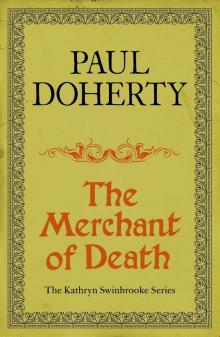 The Merchant of Death
The Merchant of Death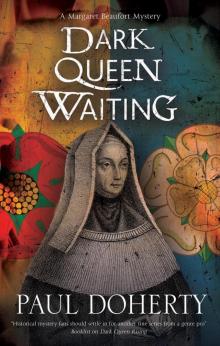 Dark Queen Waiting
Dark Queen Waiting Devil's Wolf
Devil's Wolf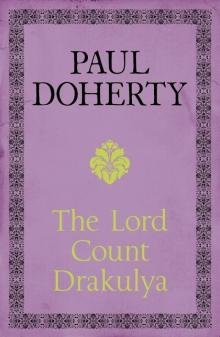 The Lord Count Drakulya
The Lord Count Drakulya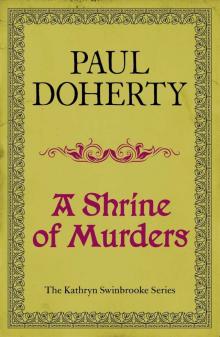 A Shrine of Murders
A Shrine of Murders The Eye of God
The Eye of God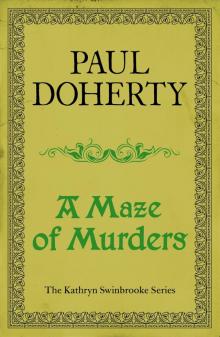 A Maze of Murders
A Maze of Murders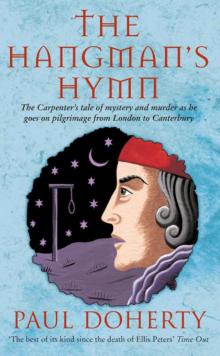 The Hangman's Hymn
The Hangman's Hymn The Godless
The Godless Death's Dark Valley
Death's Dark Valley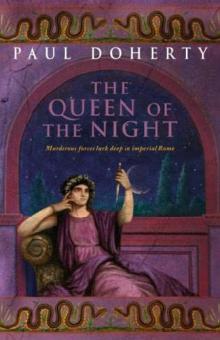 Queen of the Night ar-4
Queen of the Night ar-4 Ghostly Murders
Ghostly Murders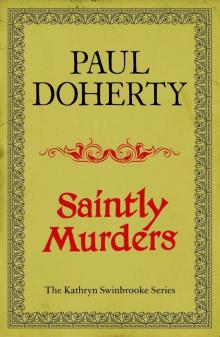 Saintly Murders
Saintly Murders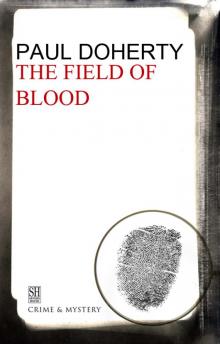 The Field of Blood
The Field of Blood Hugh Corbett 10 - The Devil's Hunt
Hugh Corbett 10 - The Devil's Hunt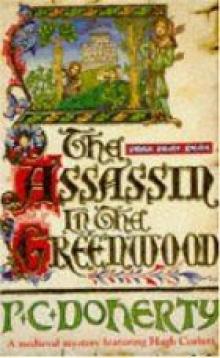 Assassin in the Greenwood hc-7
Assassin in the Greenwood hc-7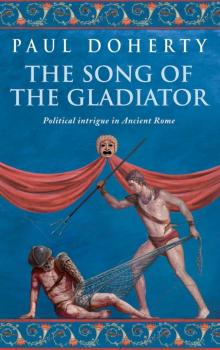 The Song of the Gladiator
The Song of the Gladiator Hugh Corbett 17 - The Mysterium
Hugh Corbett 17 - The Mysterium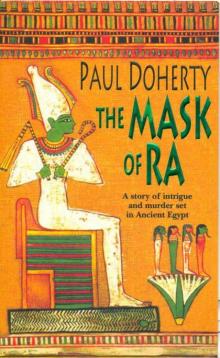 The Mask of Ra
The Mask of Ra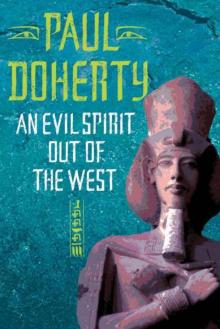 An Evil Spirit Out of the West (Ancient Egyptian Mysteries)
An Evil Spirit Out of the West (Ancient Egyptian Mysteries) Herald of Hell
Herald of Hell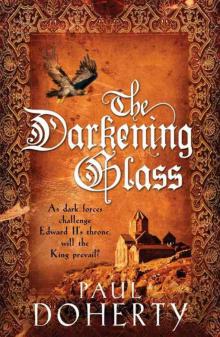 Mathild 03 - The Darkening Glass
Mathild 03 - The Darkening Glass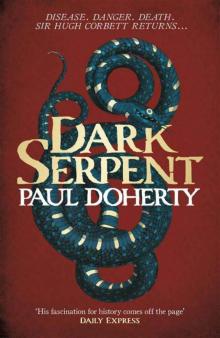 Dark Serpent (Hugh Corbett 18)
Dark Serpent (Hugh Corbett 18)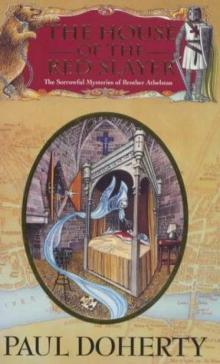 House of the Red Slayer smoba-2
House of the Red Slayer smoba-2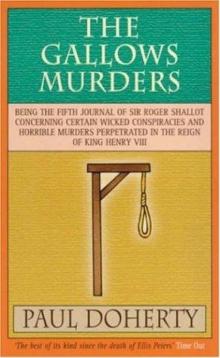 The Gallows Murders
The Gallows Murders The Straw Men
The Straw Men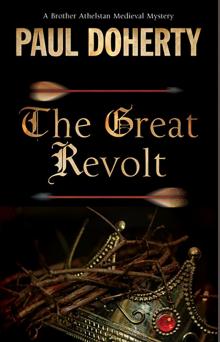 The Great Revolt
The Great Revolt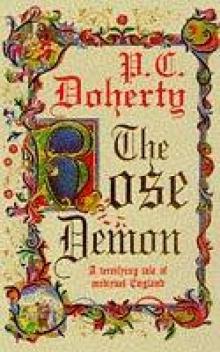 The Rose Demon
The Rose Demon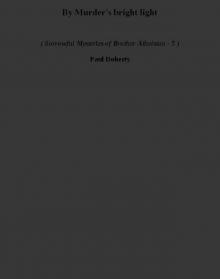 By Murder's bright light smoba-5
By Murder's bright light smoba-5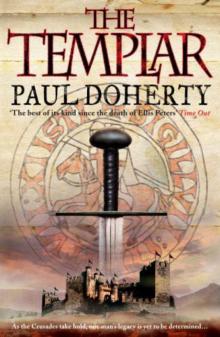 Templar
Templar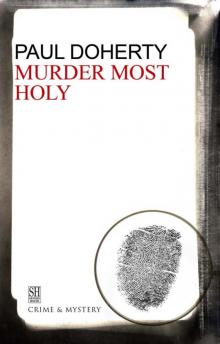 Murder Most Holy
Murder Most Holy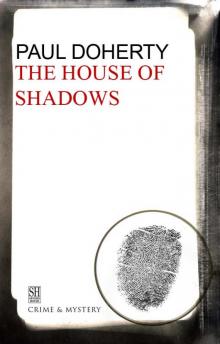 The House of Shadows
The House of Shadows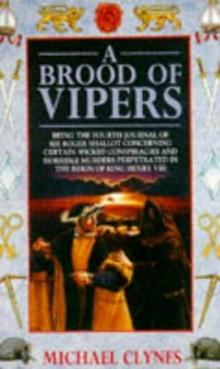 A Brood of Vipers srs-4
A Brood of Vipers srs-4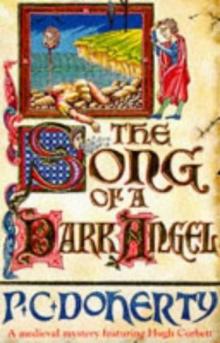 Song of a Dark Angel hc-8
Song of a Dark Angel hc-8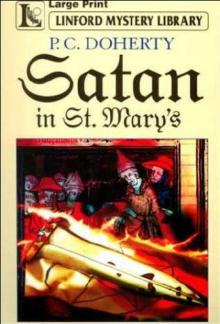 Satan in St Mary hc-1
Satan in St Mary hc-1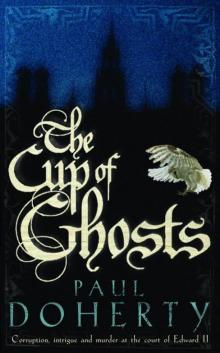 Mathilde 01 - The Cup of Ghosts
Mathilde 01 - The Cup of Ghosts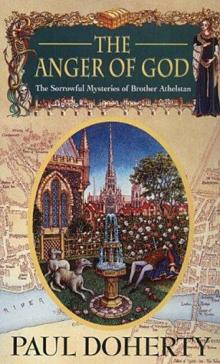 The Anger of God smoba-4
The Anger of God smoba-4 Isabella and the Strange Death of Edward II
Isabella and the Strange Death of Edward II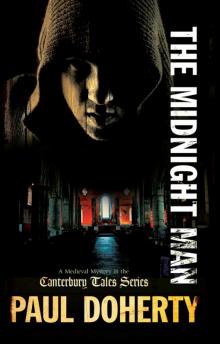 The Midnight Man ctomam-7
The Midnight Man ctomam-7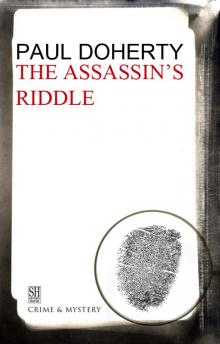 The Assassin's Riddle
The Assassin's Riddle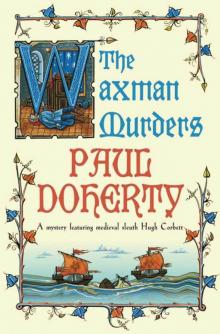 Hugh Corbett 15 - The Waxman Murders
Hugh Corbett 15 - The Waxman Murders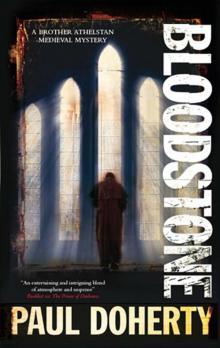 Bloodstone smoba-11
Bloodstone smoba-11 Bloodstone
Bloodstone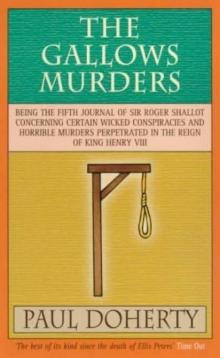 The Gallows Murders srs-5
The Gallows Murders srs-5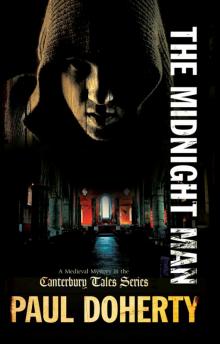 The Midnight Man
The Midnight Man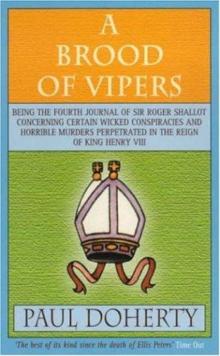 A Brood of Vipers
A Brood of Vipers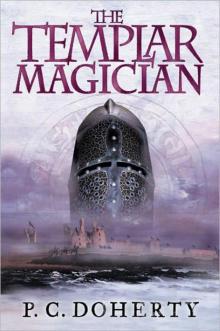 The Templar Magician
The Templar Magician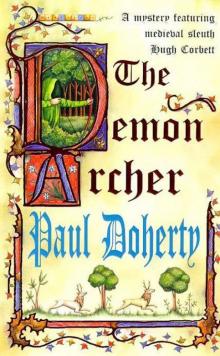 Hugh Corbett 11 - The Demon Archer
Hugh Corbett 11 - The Demon Archer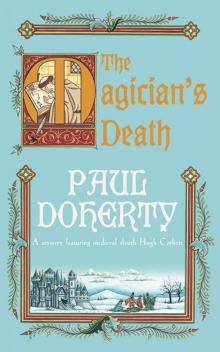 Hugh Corbett 14 - The Magician's Death
Hugh Corbett 14 - The Magician's Death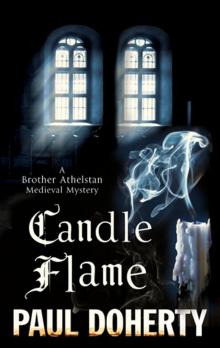 Candle Flame
Candle Flame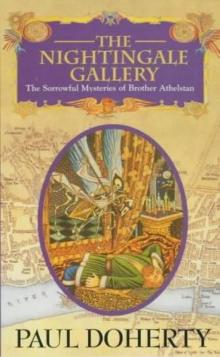 The Nightingale Gallery smoba-1
The Nightingale Gallery smoba-1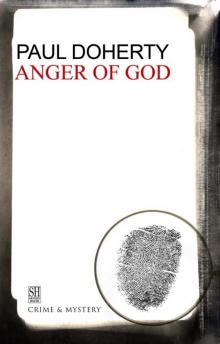 The Anger of God
The Anger of God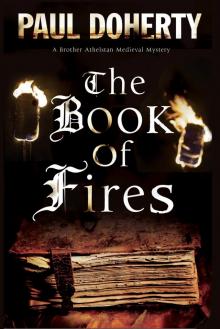 The Book of Fires
The Book of Fires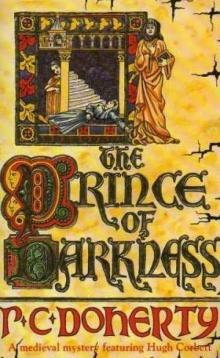 Prince of Darkness hc-5
Prince of Darkness hc-5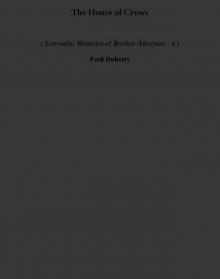 The House of Crows smoba-6
The House of Crows smoba-6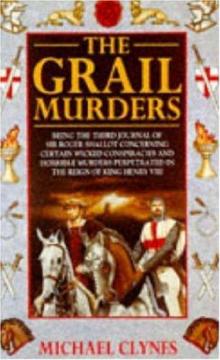 The Grail Murders
The Grail Murders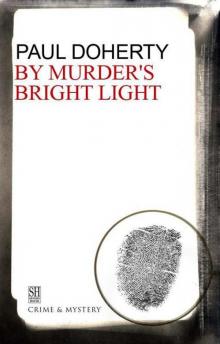 By Murder's Bright Light
By Murder's Bright Light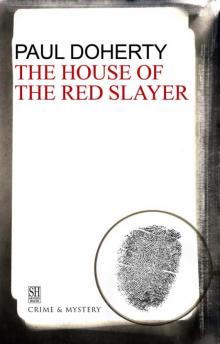 House of the Red Slayer
House of the Red Slayer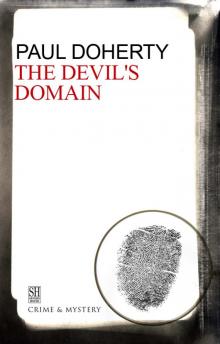 The Devil's Domain
The Devil's Domain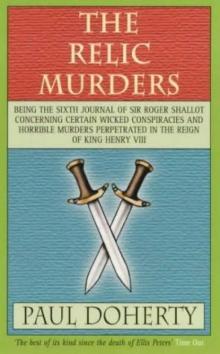 The Relic Murders srs-6
The Relic Murders srs-6 A haunt of murder ctomam-6
A haunt of murder ctomam-6 The Straw Men smoba-12
The Straw Men smoba-12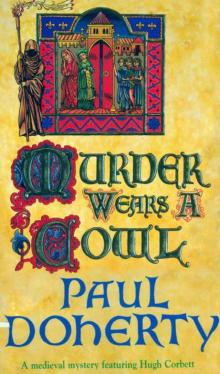 Hugh Corbett 06 - Murder Wears a Cowl
Hugh Corbett 06 - Murder Wears a Cowl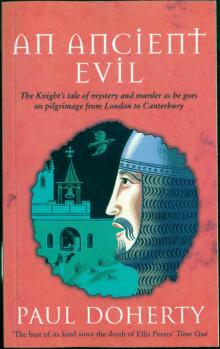 An Ancient Evil (Canterbury Tales Mysteries)
An Ancient Evil (Canterbury Tales Mysteries)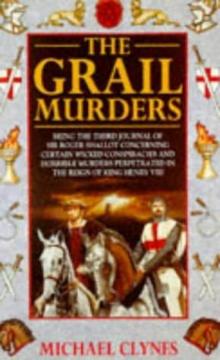 The Grail Murders srs-3
The Grail Murders srs-3 The Fate of Princes
The Fate of Princes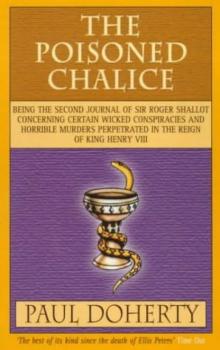 The poisoned chalice srs-2
The poisoned chalice srs-2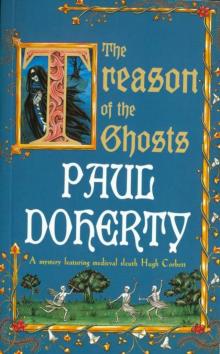 Hugh Corbett 12 - The Treason of the Ghosts
Hugh Corbett 12 - The Treason of the Ghosts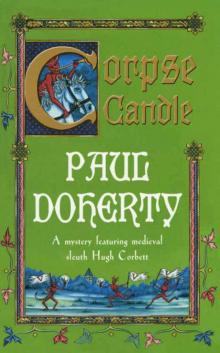 Hugh Corbett 13 - Corpse Candle
Hugh Corbett 13 - Corpse Candle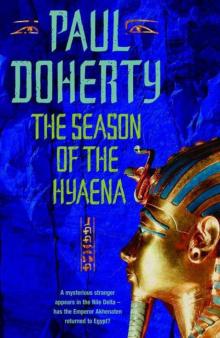 The Season of the Hyaena (Ancient Egyptian Mysteries)
The Season of the Hyaena (Ancient Egyptian Mysteries)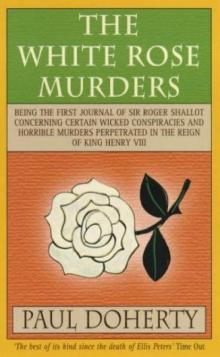 The White Rose murders srs-1
The White Rose murders srs-1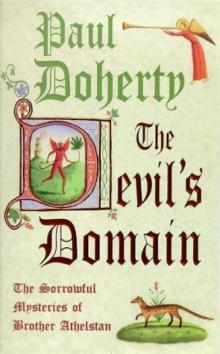 The Devil's domain smoba-8
The Devil's domain smoba-8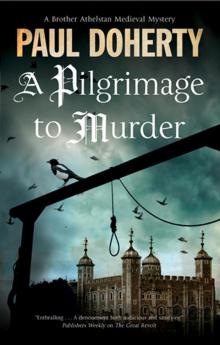 A Pilgrimage to Murder
A Pilgrimage to Murder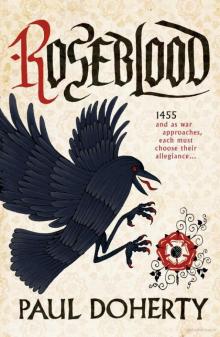 Roseblood
Roseblood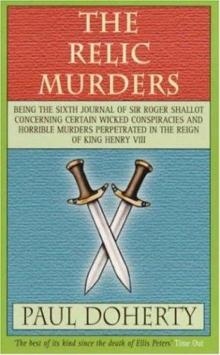 The Relic Murders
The Relic Murders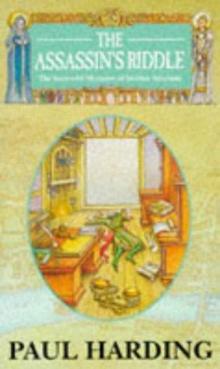 The Assassin's riddle smoba-7
The Assassin's riddle smoba-7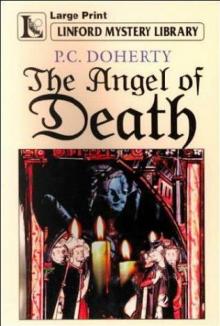 Angel of Death hc-4
Angel of Death hc-4 Dark Queen Rising
Dark Queen Rising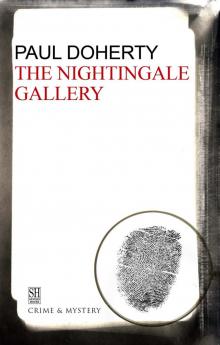 The Nightingale Gallery
The Nightingale Gallery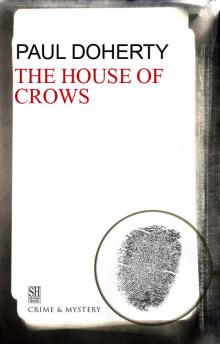 The House of Crows
The House of Crows Spy in Chancery hc-3
Spy in Chancery hc-3